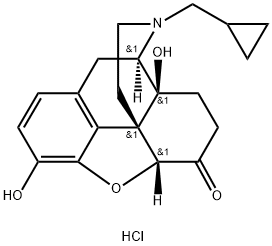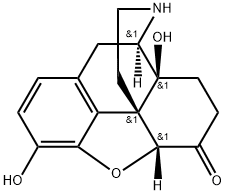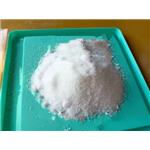Description
Naltrexone hydrochloride is a potent, long-acting, orally-effective narcotic
antagonist useful in the management of narcotic addiction.
Chemical Properties
White Crystalline Powder
Uses
Narcotic antagonist, In treatment of?alcoholism
Uses
sulfonamide, carbonic anhydrase inhibitor, anti-glaucoma agent
Uses
Nonselective opioid receptor antagonist; congener of naloxone
Uses
Naltrexone hydrochloride has been used:
as an opioid antagonist, to analyse its effect on ethanol preference using Caenorhabditis elegans as a model.
to determine its effectiveness in reducing the preference for substance of abuse (SOA) like nicotine and cocaine using Caenorhabditis elegans as a model.
in the preparation of combinatorial drug, PXT3003 for treating Charcot-Marie-Tooth disease 1A (CMT1A) transgenic rat model Pmp22.
Definition
ChEBI: Naltrexone hydrochloride is a hydrochloride obtained by reaction of oxycodone with one molar equivalent of hydrochloric acid. it is a mu-opioid receptor antagonist that is used to treat alcohol dependence. It has a role as a mu-opioid receptor antagonist, an antidote to opioid poisoning and a central nervous system depressant. It contains a naltrexone(1+).
Biological Activity
Opioid antagonist.
Biochem/physiol Actions
Competitive antagonist for μ, κ, δ, and σ-opioid receptors; has greater oral efficacy and longer duration of action than naloxone.
Clinical Use
Opioid antagonist:
Adjunctive prophylactic treatment in patient’s
previously opioid dependant
Treatment of alcohol dependence
Drug interactions
Potentially hazardous interactions with other drugs
Opioids: Avoid concomitant use.
Metabolism
Naltrexone is well absorbed from the gastrointestinal
tract but is subject to considerable first-pass metabolism
and may undergo enterohepatic recycling. It is extensively
metabolised in the liver and the major metabolite,
6-β-naltrexol, may also possess weak opioid antagonist
activity.
It is excreted mainly in the urine, <5% is excreted in the
faeces.
The renal clearance for naltrexone ranges from 30-127
mL/min and suggests that renal elimination is primarily
by glomerular filtration
Purification Methods
This narcotic antagonist has been purified by recrystallisation from MeOH and dried in air. The free base has m 168-170o after recrystallisation from Me2CO. [Cone et al. J Pharm Sci 64 618 1975, Gold et al. Med Res Rev 2 211 1982.]






